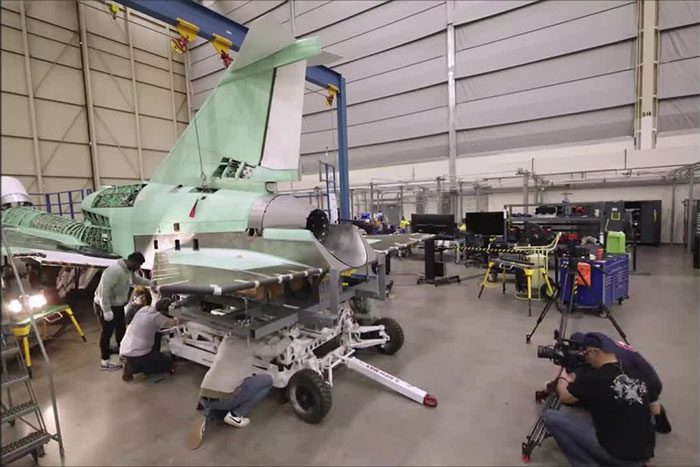NASA Shares Footage of Tail Assembly Installation for X-59 Aircraft at Lockheed Martin Facility in Palmdale, California.

Lockheed Martin began manufacturing parts for the X-59 in November 2018.
The installation of the tail assembly allows the X-59 manufacturing team to continue final testing of the systems and wiring on the aircraft, SciTechDaily reported on April 16. This aircraft is preparing for ground integration testing, including engine runs and ground operations.
The X-59 aircraft is a key component of the mission named Quesst, developed in collaboration between NASA and Lockheed Martin. Lockheed Martin began manufacturing parts for the X-59 in November 2018.
The X-59 measures 30.4 meters in length and 9 meters in wingspan, powered by a single jet engine. When operational, it will be piloted by only one pilot. Its design speed is expected to be Mach 1.4, approximately 1,500 km/h, flying at an altitude of 16,700 meters.
The X-59 is designed to demonstrate the capability of flying at supersonic speeds without creating noise. The mission aims to convert the sonic boom (the loud noise produced when an object travels faster than sound) into a quieter sound. The X-59 will fly over various communities in the U.S. to collect data on human responses to the sounds generated during supersonic flight. This data will be provided to U.S. and international regulatory agencies.
Through Quesst, NASA aims to demonstrate that the X-59 can fly faster than sound without producing the disruptive sonic boom that led to the ban on commercial supersonic flights over land by the Federal Aviation Administration (FAA) in 1973.





















































